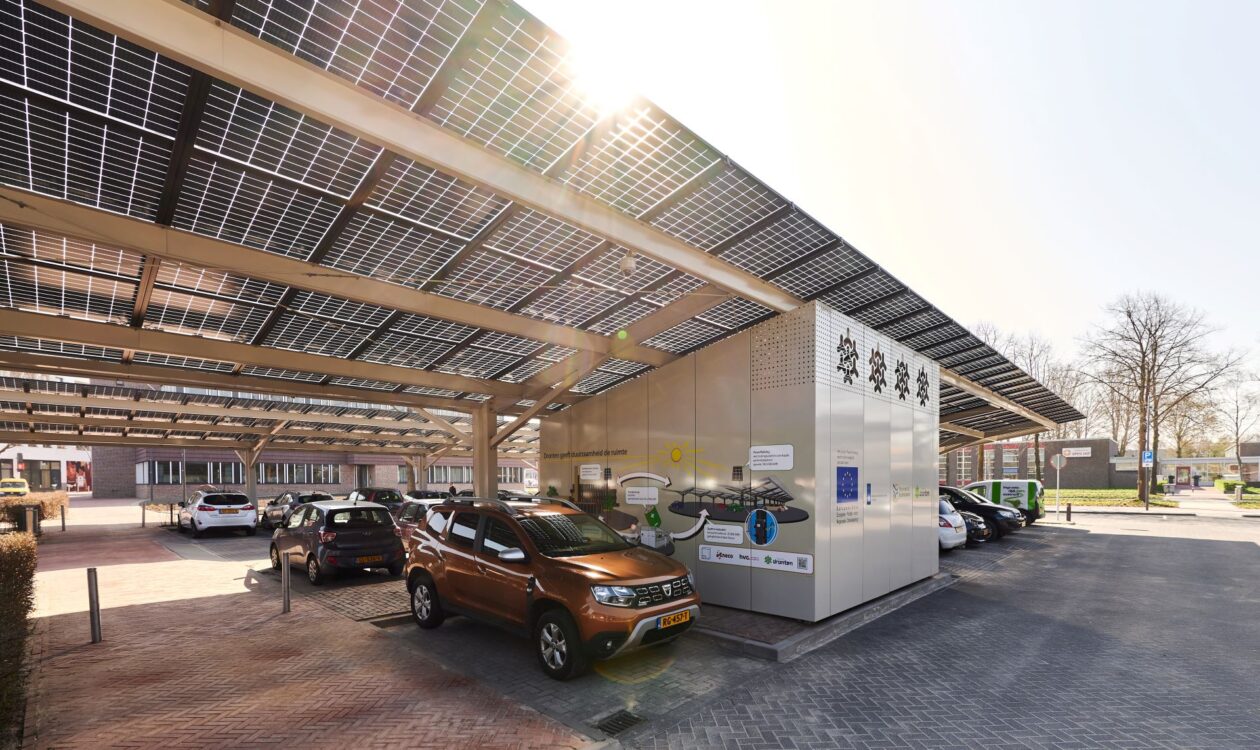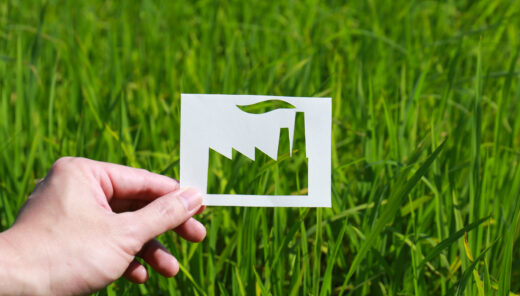Solar farm planning – What does a successful project require?
Solar farm design and planning
Planning a solar park requires much more than just placing panels on a map. A successful project requires careful area analysis, management of permit and planning processes, and technical compatibility with the electricity grid. Discover how a profitable solar power project is created step by step.
Solar park design – summary:
- Solar park design requires technical, economic and planning compatibility
- The preliminary study maps solar radiation conditions, land use and grid connection options.
- Permit processes, land use agreements and acceptability determine the progress of the project
- Profitability depends on, among other things, the market price of electricity, PPA agreements and production profile.
Solar park design in practice
The design of a solar park is a multi-stage process, involving technical, economic and land use perspectives are intertwined. The goal of the planning is to determine whether solar electricity can be produced in a certain area in a way that is feasible from a licensing perspective, environmentally friendly and economically viable.
Page published 10.9.2025
Preliminary study phase of solar park design
Preliminary study phase of solar park design
The design of a solar farm begins with determining whether the area is technically suitable for electricity production. The most important factors are solar radiation, terrain characteristics and the possibility of connecting the production to the electricity grid these basic conditions are not met, the project cannot proceed.
The preliminary study assesses, for example:
- Radiation data, such as measurements from the Finnish Meteorological Institute or PVGIS, which provide an idea of the annual production potential of the area
- Shading factors, such as trees, buildings and elevation differences, which can reduce the efficiency of the panels
- Soil bearing capacity and land use restrictions: arable land is often well suited as a base for a solar park, while wetlands or protected areas may prevent construction altogether
- Proximity to the electricity grid: the closer the substation or transmission line is located, the lower the connection costs.

Next steps in solar park planning: project development and permit processes
1. Land use agreements
The solar power project developer enters into lease agreements with landowners. The typical lease term is 25–35 years.
It is important to ensure:
- sufficient area
- clear ownership
- the right to connect power plants to the grid and carry out earthworks
2. Construction and planning processes
Smaller solar parks can be built on existing land with a building permit to the land use planning..
Larger projects often require:
- preparation of a general or partial general plan
- a deviation decision to the land use plans if it does not yet allow solar power
- The process includes negotiations and hearings with authorities and can take 1–2 years.
3. Environmental Impact Assessment (EIA)
EIA required if the project exceeds a certain size limit:
Things to consider:
- landscape effects
- noise (inverters, transformers)
- nature values (e.g. bird nesting areas, flying squirrels)
- cultural environments
Solar park profitability analysis
Solar farms in Finland mainly operate on market terms, but in some cases they can receive investment support, for example from EU-funded programs.
Factors affecting profitability:
1. Long-term power purchase agreements
Long-term power purchase agreements are concluded directly with an electricity consumer, such as a large company. Such agreements can last 10-15 years and fix the price of electricity in advance.
Benefits:
- Protect against electricity price fluctuations
- Ensure a predictable revenue stream for funders and investors
- Facilitate project financing because the contract acts as collateral
2. Compatibility of production and demand
Solar power produces electricity during the day, especially on clear days. If solar production coincides with peak consumption or high market prices, the electricity typically offers a better price.
3. Scalability
Larger solar power projects tend to be relatively cheaper because construction, cabling, and equipment cost less compared to the production capacity.
Stakeholder collaboration and acceptability
Stakeholder collaboration and acceptability
Stakeholder cooperation and local acceptance are key prerequisites for the progress of a solar power project. Local residents are particularly interested in the project’s landscape impacts and land use, which is why an opendialogue and transparent communication are essential. Project planning should take biodiversity into account, for example by utilizing meadow areas and pollinator-friendly solutions.

Solar farm construction phase
Solar farm construction phase
When designing, planning and permitting has been completed, we move on to the construction phase of the solar park. Construction requires careful project management, precise logistics and good coordination between contractors, the grid company and equipment suppliers.

What uncertainties are involved in the design of a solar park?
Althoug hsolar energy is in Finland In a rapidly growing market, the design phase of a solar park involves many uncertainties that can delay or prevent the project from progressing. Successful design requires not only technical expertise but also foresight and flexibility in changing circumstances.
1. Uncertainty of network connection
The implementation of a solar park requires connection to the electricity grid, but the available capacity does not always match the planned production. Finding a connection point, obtaining a capacity reservation, and the grid company’s schedules can cause long waits or additional investments.
2. Slow or inconsistent permission processing
The planning phase often requires a building permit, planning guidance and possibly an EIA procedure. The duration of these processes can vary significantly from municipality to municipality.
3. Planning and EIA appeals
Carefully implemented planning and permitting reduce the risk of being caught up in a multi-year cycle of appeals regarding planning decisions or environmental impact assessments.
4. Land use conflicts
Active and open dialogue with landowners at the early planning stage reduces ambiguity and conflict, which in turn reduces local resistance, facilitates agreement, and enables the formation of a coherent regional entity.
5. Changes in regulation or policy
Energy policy, building regulations or zoning guidelines can change during the planning process. For example, a new conservation area or municipal policy can prevent a previously promising project from progressing.
Planned solar power plants in Finland
At the beginning of 2025, there were over 23,300 MW of solar power projects under development in Finland. This is a significant amount compared to the current installed capacity, but clearly smaller than the planned wind power capacity. Solar power can complement wind and hydropower, especially during the summer season, when production is at its highest.
What is driving the growth of solar power in Finland?
Behind the growing popularity of solar power are trends that make solar energy an increasingly attractive option.
Corporate responsibility goals increase demand
More and more companies are committed to climate goals and want to reduce their carbon footprint in their own electricity consumption. Strategies supporting sustainability and responsibility reporting are guiding energy choices towards renewable sources.
Cost pressure on fossil fuels increases the attractiveness of renewables
Fossil fuel price fluctuations and geopolitical uncertainty have made renewable electricity an increasingly attractive option. The advantage of solar power is its price stability: once a project is built, production costs are relatively predictable for decades to come.
The positive attitude of municipalities and smooth permitting promote construction
Municipalities play a key role in the implementation of solar parks, as zoning and building permits determine whether a project can be implemented. More and more municipalities are taking a positive approach to solar power. Permit procedures are also being developed to be faster and clearer, which reduces administrative obstacles.
Technological development and energy reserves
New technologies, such as battery storage, enable more efficient timing of solar power production and consumption. Solar panel efficiencies are increasing, and Finland’s cool, clear climate improves production efficiency, especially in the spring and summer seasons.
Solar park design with Sweco
The design and implementation of a solar park requires technical, commercial and permitting process expertise. Sweco supports its customers in all stages, from preliminary studies to planning, implementation and optimization of use.
Contact us!
Sources:
https://www.fingridlehti.fi/aurinkovoiman-valoisa-tulevaisuus/
https://energia.fi/energiatietoa/energiantuotanto/sahkontuotanto/aurinkovoima/
https://joint-research-centre.ec.europa.eu/photovoltaic-geographical-information-system-pvgis_en
https://www.ymparisto.fi/fi/osallistu-ja-vaikuta/ymparistovaikutusten-arviointi
https://www.ymparisto.fi/fi/rakennettu-ymparisto/kaavoitus-ja-alueidenkaytto/kaavoitus
https://www.epvaurinkovoima.fi/
https://www.businessfinland.fi/suomalaisille-asiakkaille/palvelut/rahoitus/energiatuki










